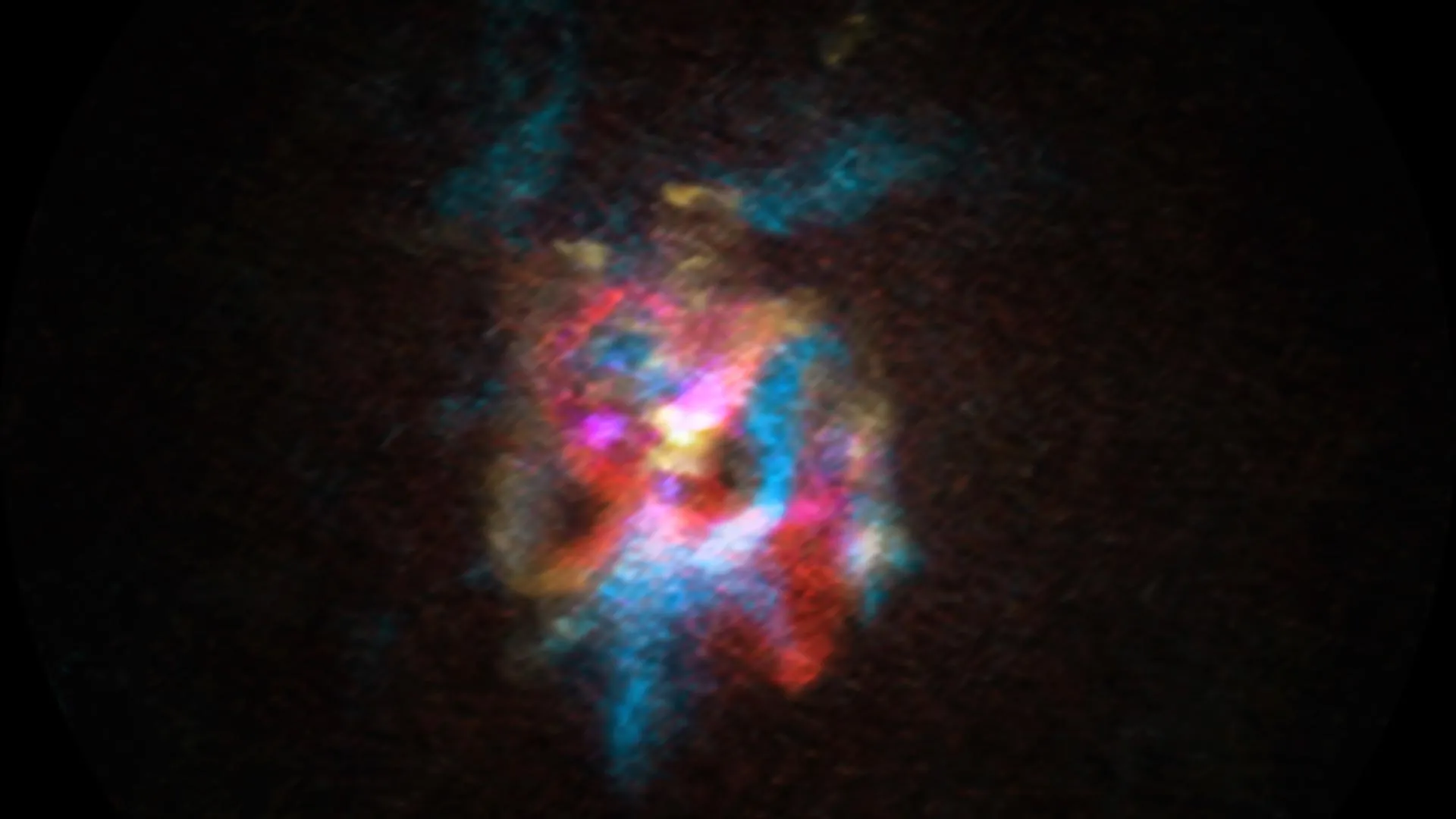Astronomers uncover enormous bubble bigger than our Solar System
- Date:
- August 21, 2025
- Source:
- Chalmers University of Technology
- Summary:
- A giant bubble of gas and dust surrounds the red supergiant DFK 52, likely created in a powerful outburst 4,000 years ago. Astronomers are baffled at how the star survived without going supernova, and suspect a hidden companion may have played a role. This discovery could reveal clues about the final stages of massive stars.
- Share:

Astronomers from Chalmers University of Technology, Sweden, have discovered a vast and expanding bubble of gas and dust surrounding a red supergiant star - the largest structure of its kind ever seen in the Milky Way. The bubble, which contains as much mass as the Sun, was blown out in a mysterious stellar eruption around 4000 years ago. Why the star survived such a powerful event is a puzzle, the scientists say.
The new results are published in the scientific journal Astronomy and Astrophysics, and the team was led by Mark Siebert, Chalmers, Sweden. Using the ALMA radio telescope in Chile, the researchers observed the star DFK 52 - a red supergiant similar to the well-known star Betelgeuse.
"We got a big surprise when we saw what ALMA was showing us. The star is more or less a twin of Betelgeuse, but it's surrounded by a vast, messy bubble of material," says Mark Siebert at Chalmers.
The bubble, a complex of clouds of gas and dust, weighs as much as the Sun, and extends out 1.4 light years from the star. That's thousands of times wider than our own solar system.
If the star was as close to us as Betelgeuse is, the bubble would appear to span a third of the full Moon's width in the sky.
ALMA's radio observations let astronomers measure the motion of molecules in the cloud, revealing that the bubble is expanding. They believe it was formed when the star suddenly ejected part of its outer layers in a powerful explosion just a few thousand years ago.
"The bubble is made of material that used to be part of the star. It must have been ejected in a dramatic event, an explosion, that happened about four thousand years ago. In cosmic terms, that's just a moment ago," says Elvire De Beck, astronomer at Chalmers.
The galaxy's next supernova?
Why DFK 52 shed so much mass without exploding as a supernova is still unclear. One possibility is that the star has a hidden companion that helped it cast off its outer layers.
"To us, it's a mystery as to how the star managed to expel so much material in such a short timeframe. Maybe, like Betelgeuse seems to, it has a companion star that's still to be discovered," says Mark Siebert.
Red supergiants like DFK 52 are nearing the ends of their lives and are expected to eventually explode as supernovae. Could this star be next?
"We're planning more observations to understand what's happening - and to find out whether this might be the Milky Way's next supernova. If this is a typical red supergiant, it could explode sometime in the next million years," says Elvire De Beck.
More about the research:
The research is presented in the paper "Stephenson 2 DFK 52: Discovery of an exotic red supergiant in the massive stellar cluster RSGC2," published in the journal Astronomy and Astrophysics. The image has been featured as ESO's Picture of the Week.
The researchers involved in the study are Mark Siebert, Elvire De Beck and Wouter Vlemmings from Chalmers University of Technology, Sweden, and Guillermo Quintana Lacaci from Instituto de Fisica Fundamental, Spain.
Red supergiants are some of the rarest, brightest stars in the sky. They are the final stage of evolution of stars born much more massive than the Sun (more than eight times the Sun's mass). For astronomers, they are keys to understanding the life stories of all stars and planets. The most massive stars create and spread newly-formed elements throughout interstellar space, energising gas and dust, and helping new generations of stars to form.
The closest red supergiants in our galaxy, the Milky Way, are easily visible for anyone with a clear view of a dark night sky. Betelgeuse, in the constellation Orion, and Antares, in Scorpius, are both well-known examples of red supergiant stars.
More about the ALMA telescope:
The Atacama Large Millimeter/submillimeter Array (ALMA), an international astronomy facility in Chile, is a partnership of ESO, the U.S. National Science Foundation (NSF) and the National Institutes of Natural Sciences (NINS) of Japan in cooperation with the Republic of Chile.
In Sweden, Onsala Space Observatory at Chalmers University of Technology, has been involved in ALMA since its inception; receivers for the telescope are one of many contributions. Onsala Space Observatory is host to the Nordic ALMA Regional Centre, which provides technical expertise to the ALMA project and supports astronomers in the Nordic countries in using ALMA.
Story Source:
Materials provided by Chalmers University of Technology. Note: Content may be edited for style and length.
Journal Reference:
- M. A. Siebert, E. De Beck, G. Quintana-Lacaci, W. H. T. Vlemmings. Stephenson 2 DFK 52: Discovery of an exotic red supergiant in the massive stellar cluster RSGC2. Astronomy, 2025; 700: L11 DOI: 10.1051/0004-6361/202555975
Cite This Page: